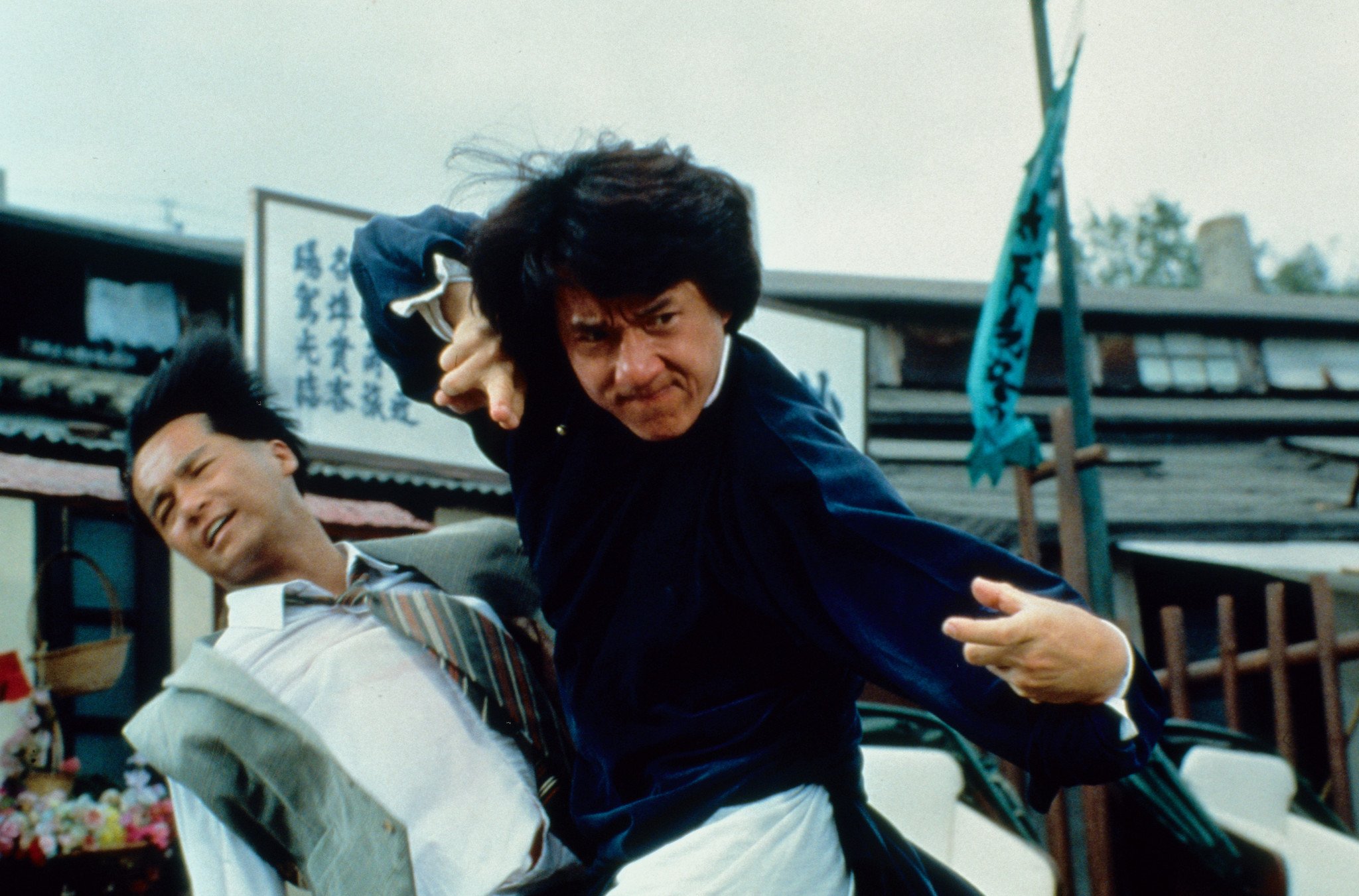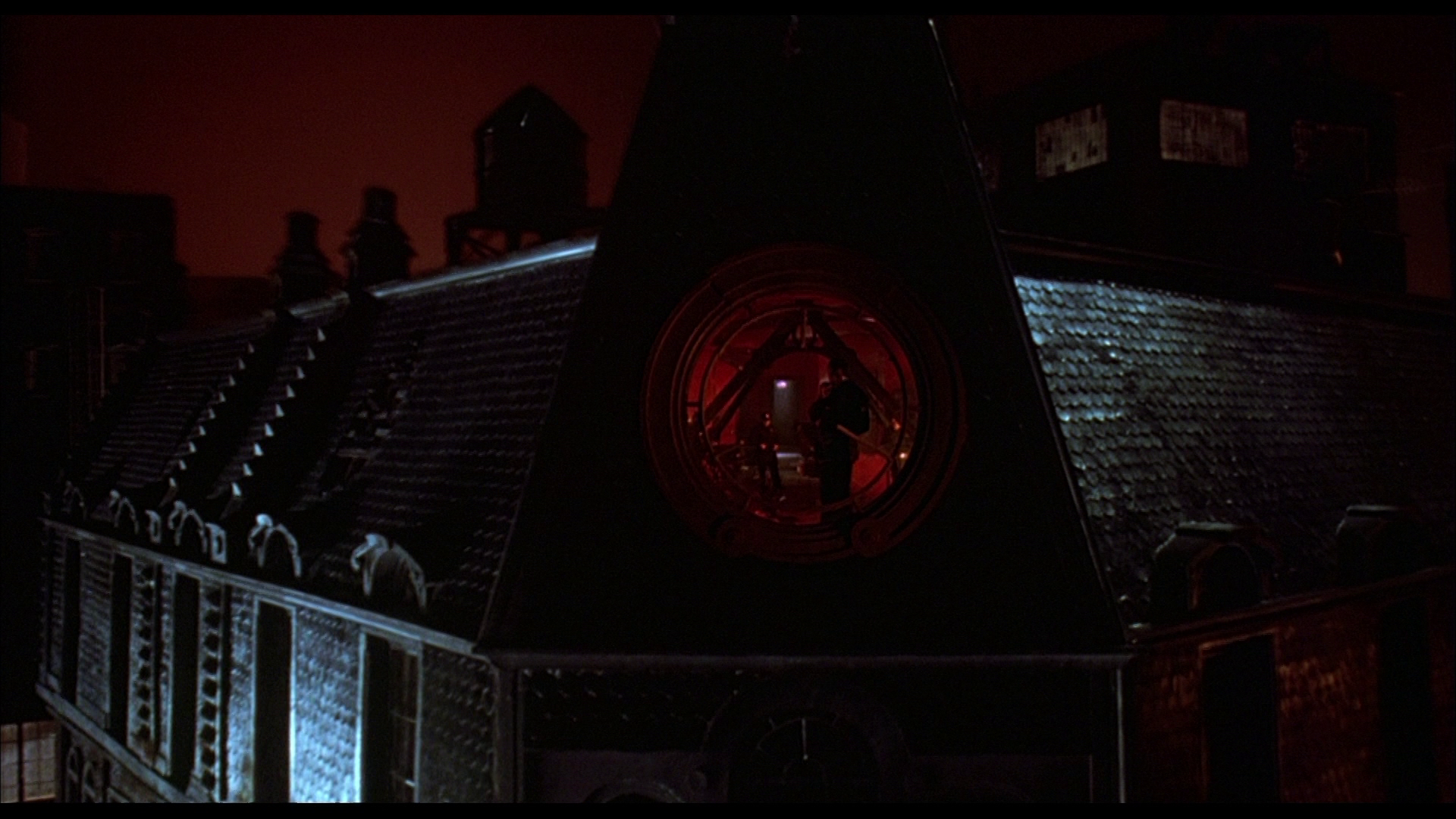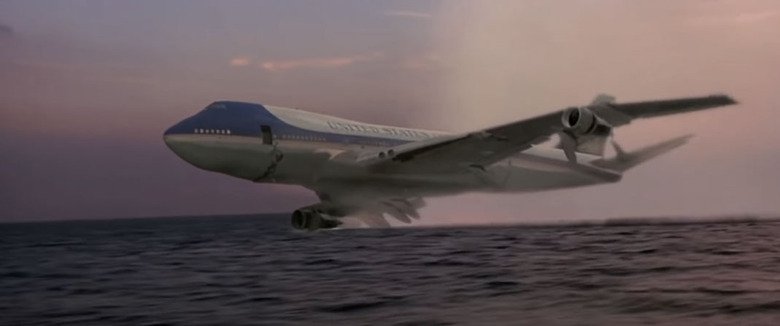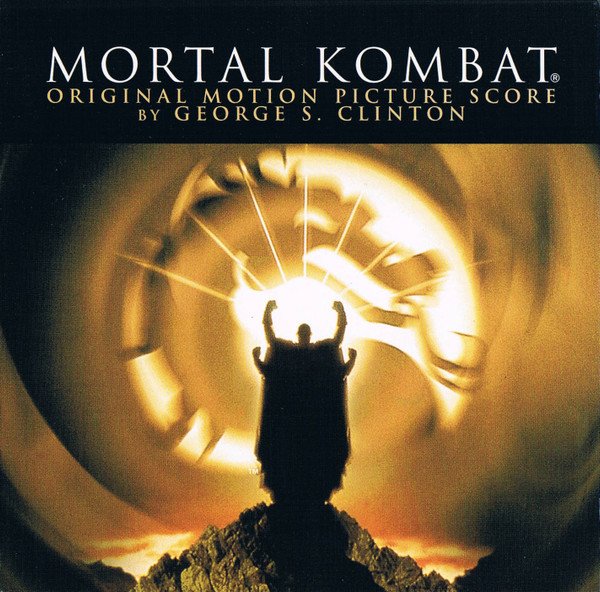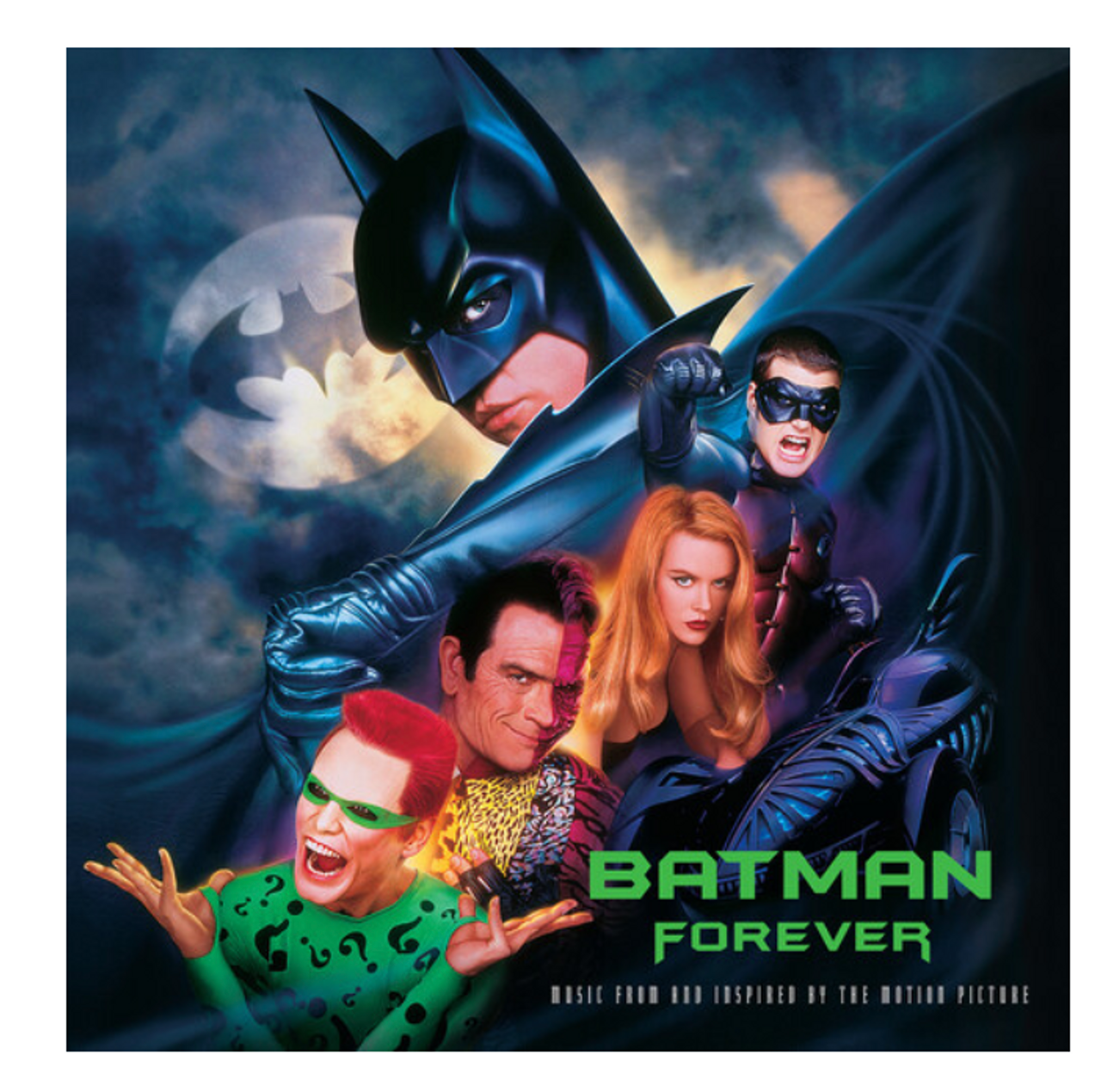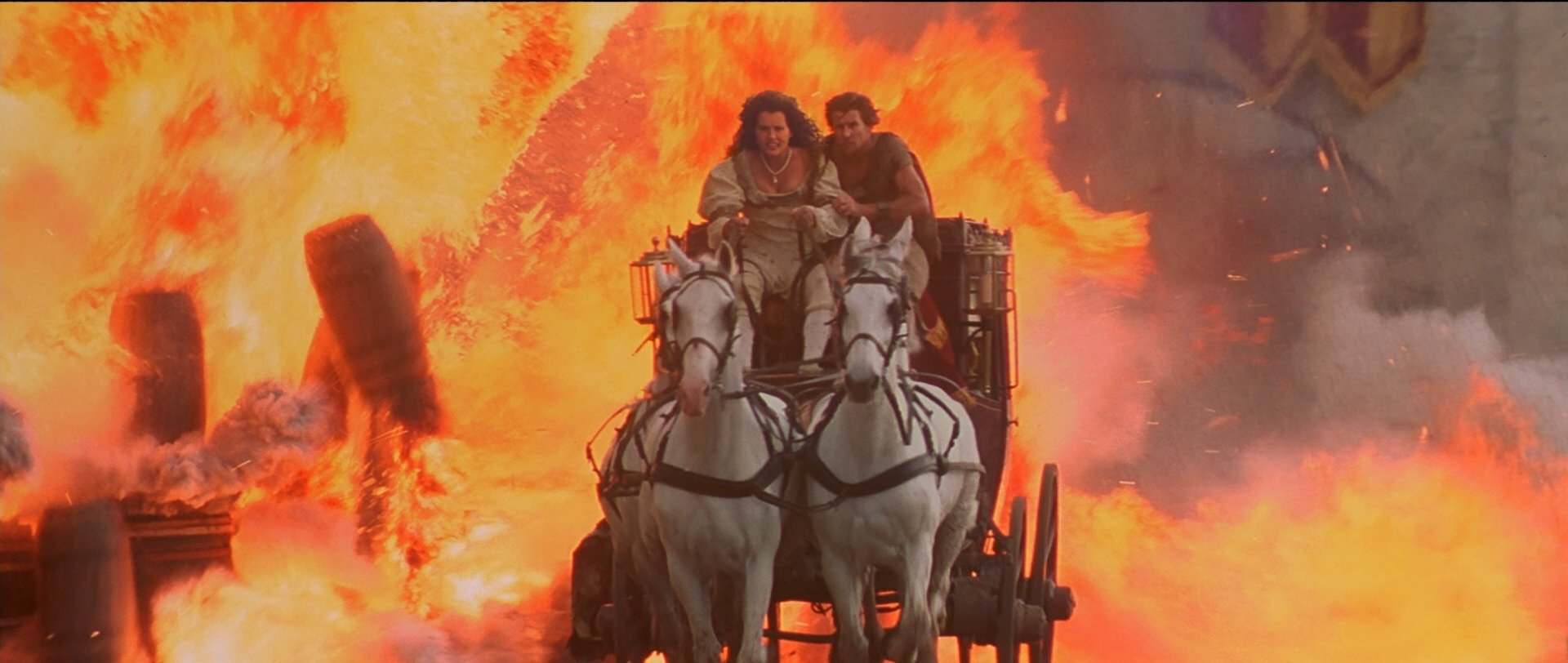Dissecting Action: The 90s
Key films
-
-
Terminator 2: Judgement Day
La Femme Nikita
Point Break
-
Hard Boiled
Police Story 3
Once Upon a Time in China
-
Hard Target
Demolition Man
Last Action Hero
-
-
-
-
The Fifth Element
-
The Mask of Zorro
Run Lola Run
Blade
Rush Hour
-
Star Wars Episode I The Phantom Menace
The Matrix
The 90s proved to be quite a difficult decade from several perspectives. Transitioning from the confinements of 80s conservatism that featured invulnerable, muscled and trigger happy heroes, an upcoming generation of filmmakers had to break new ground not only in fresh content and in approach too. Whether this was achievable though early CGI, novel camera techniques, larger production budgets, wider scope and a manufactured mainstream feeling remained to be seen. Yet, amidst the sea of change, an advanced breed of action protagonist saw the light of the day with an emphasis more on skills and pacifism and less on hyper-masculine appearance, carrying an awareness towards pop culture and inhibiting a tongue in cheek attitude even when the world is at stake.
In the late 80s, Martin Riggs and John McClane became the first examples of this, setting off a trend that will galvanize the next ten years or so. Action roles now were keeping with the times; warriors of all sorts did not have to rely on shooting first and asking questions later behavior but required to possess a greater variety of traits - from having a particular hobby (“Hard Boiled” (1992), “Broken Arrow” (1996)) to welcoming the opposite sex as capable partners in ass kicking (“Terminator 2: Judgement Day“ (1991), “Police Story 3“ (1992), “The Matrix“ (1999)). Of course, there are several examples that attempted to attract audiences through the successful 80s recipe of one liners, excessive machoism and lame female roles (“Marked for Death” (1990), “The Specialist” (1994), “Eraser“ (1996)) but each output was essentially returning diminishing box office results. Moviegoers desired new ideas and storylines, visual stimulus and more likeable characters.
READ ALSO: Dissection action: The 2000s
This more openminded sandbox of creativity allowed directors to lean heavily on aesthetics as vivid and as varied as their core context became more “fluid”. It was the advent of visual auteurism: Stand out filmmakers like Michael Bay, Paul WS Anderson, Simon West and Jan de Bont burst using a less straightforward take on stories (”Bad Boys” (1995), “Mortal Kombat“ (1995), “Con Air” (1997)), tonally uneven with the onscreen violence yet something special contrasting other (disastrous) outputs that lacked a sense of irony and taking themselves way too seriously (“On Deadly Ground” (1994), “Waterworld“ (1995), “Speed 2” (1997), “Mortal Kombat: Annihilation” (1997)).
This identity crisis though was not only present in Hollywood but affected also the 80s action mecca too; Hong Kong. The Fragrant Harbor in the second half of the 90s begun to release pedestrian outputs (“Once Upon a Time in China and America“ (1997), “Who Am I?” (1998)) deficient of their predecessors’ visceral thrills and its effort to curb on the CGI momentum resulted in poor outputs (“The Storm Riders” (1998)). On the other hand, upcoming cinematic markets (France, Germany) started chunking out influential gems that took time to reach the minds of worldwide audiences due to a difference in sensibilities (“Leon the Professional“ (1994), “Run Lola Run“ (1998)) and a priority on more nuanced scripts filled with morally grey areas. Amidst all this chaotic flow of originality, screenwriters sought to criticize politics, art and more, touching sensitive subjects and just how the fine wine ages in time, these initially misunderstood and in some cases hated, attempts are wholly relevant today, predicting future beliefs and group tactics with a sniper’s precision. Therefore, unpacking more diligently the 90s action cinema, will unearth timeless masterpieces besides bright colors and dated fashion and cult gems, recently appreciated and re-evaluated for their thematic efforts. So what does characterize an action film of the 90s?
Vulnerable leads
Leon and Matilda in Besson’s “Leon the Professional” (1994).
The era of the one note tough and hyper-muscular guy was a thing of the past. Sure you will get typical outputs from the likes of Seagal/Van Damme/Sly/Arnie but audiences showed support to guy next door characters (who happen to be reluctant yet courageous badasses of course). If you have to group common personality traits of these action roles, you will be surprised to find that most (if not all) were introverted, less prone to anger, more practical and had a profession that extended beyond the tired CIA operative and retired marine trope: Fan favorites such as Johnny Utah (“Point Break” (1991)), Tequila (“Hard Boiled”), Richard Kimble (“The Fugitive” (1993)), Leon (“Leon the Professional”) (1994), Eric Draven (“The Crow” (1994)), Vincent Hanna (“Heat” (1995)), Stanley - “But of course you are” - Goodspeed (“The Rock” (1996)), Zorro (“The Mask of Zorro” (1998)), Neo (“The Matrix”) and Qui-Gon Jinn (“Star Wars Episode I: The Phantom Menace” (1999)) are all fondly remembered by keen moviegoers and cine afficionados. Even the Terminator himself (i.e., Arnold Schwarzenegger) sought out a more vulnerable role in the successful “Total Recall” (1990) while Pierce Brosnan’s James Bond risked his neck “The World is not Enough” (1999) by attempting to shield Elektra King from any harm as opposed to be a glorified action mascot rampaging through goons and villains alike.
2. Tongue in cheek approach and pop culture references
Arnie in the now classic “Last Action Hero” (1993)
Cameron Poe is aware off how ridiculous the premise of “Con Air” (1997) is.
Embracing a sillier side to the ball to the walls action gave room for a more malleable approach that extended beyond one liner finishers and R-rated kills. Filmmakers poked fun within their own thematic context through pop culture references and sometimes calling out the absurdity of the proceedings by dressing enthusiastically grievous situations lightheartedly much to the audience’s amusement in “Teenage Mutant Ninja Turtles” (1990), “Last Action Hero” (1993), “Demolition Man” (1993), Chan’s “City Hunter” (1993), “Desperado” (1995), “Mortal Kombat”, Carpenter’s spot on LA satire in “Escape from L.A.” (1996), “Batman and Robin” (1997), “Con Air“, Besson’s OTT “The Fifth Element” (1997), Paul Verhoeven’s “Starship Troopers” (1997) and the Chan/Tucker combo in Brett Ratner’s “Rush Hour” (1998). Whether the results were productive remained to be seen. Certain movies have not aged well due to their lack of finesse to begin with (“Batman and Robin“, “Mortal Kombat: Annihilation“); others though have become highly relevant and way more enjoyable that they have any right to be reaching cult status through newly founded appreciation (“Last Action Hero“, “Demolition Man“, “Mortal Kombat“, “Escape from L.A.”).
3. Tough women
Anne Parillaud as the assassin Nikita in “La Femme Nikita” (1991)
The outcry for the lack of strong females roles (especially in the action department) in 2020s is a baffling choice considering how the 90s singlehandedly changed the then current cinescape. Finally, women could easily kick ass like men (although to be honest Hong Kong and Japan were doing this two decades earlier already), their parts becoming something more than being an object of desire, a damsel in distress, a helpless housewife or a hypersexualized femme fatale. “Total Recall” broke barriers by having the first proper female vs female warrior fight (in the US cinema) and after that, things expanded aggressively both in starring and supporting roles (“Blue Steel” (1990), “Predator 2“ (1990), “The Bride with the White Hair“ (1993), “Tank Girl“ (1995), “Twister” (1996), “Mortal Kombat Annihilation”, “Blade” (1998)). French auteur Besson and Finnish maestro Renny Harlin championed for the female physique to enter dynamically in the boys’ arena with quite ballsy moves (“Leon the Professional”, “The Messenger” (1999)); Harlin believed so much that women can lead a blockbuster that he got over $90 million dollars to create a fantastic and underrated pirate epic in his “Cutthroat Island” (1995) for his then wife Geena Davis and despite its lukewarm reception, he continued to push for it with his now cult and Shane Black written “The Long Kiss Goodnight” (1996).
Milla Jovovich as the naive but deadly Leeloo in “The Fifth Element” (1997)
Despite some conservative eye rolling, the gamble had paid off. These characters made cinematic history and became all time favorites; In 1991 Sarah Connor in “Terminator 2: Judgment Day” (1991) proved to be a heroic and complex character, a far cry from the terrified urban girl of the first “Terminator” (1984) and Besson’s assassin in Nikita (“La Femme Nikita“ (1991)) was popular enough to warrant a US remake with Bridget Fonda in 1993; Jackie Chan allowed Michelle Yeoh to break a Guiness record by jumping with a motorcycle on a speeding train in “Police Story 3” (1992) and she was also the first Bond girl who actively participated in espionage shenanigans in the underrated “Tomorrow Never Dies” (1997); Speaking of Bond, Xenia Onatopp was one of the few Bond girls who almost killed the Brit spy (“Goldeneye” (1995)); “The Fifth Element” made a star out of Milla Jovovich in her breakout role as Leeloo “Dallas” (multiplass!), Tom Tykwer gave us the determined Lola (“Run Lola Run”) and Trinity is a beloved action icon who saves Neo in the cultural behemoth that was “The Matrix”.
Carrie-Anne Moss in “The Matrix” (1999)
4. Transitioning from Hong Kong to the US
John Woo, the father of gun fu
Besides Bruce Lee’s worldwide cultural impact, nobody else had managed to upset the cinematic narrative. His tight choreography had now been replaced by simple one shot punches and Karate yells in obvious (and now silly looking) poses. Things changed when an exodus occurred from Hong Kong with directors (John Woo, Tsui Hark, Ringo Lam), actors (Jackie Chan, Jet Li, Robin Shou, Michelle Yeoh, Chow Yun-fat) and choreographers (Yuen Woo-ping) moving to the US and bringing along a sandbox of action creativity: from contact choreography to stunt coordination and heroic bloodshed shoot outs, executives and audiences were getting a glimpse of how things were run in the Fragrant Harbour where each cinematic output was seeking to capture as many as possible outrageous and life threatening sequences on film.
However, in the US such rampant (one could argue careless) flexibility was not an option; from unions to an army of professionals behind the camera, staging such incredible feats of martial arts proness was frankly not achievable. Still, despite heavy (creatively) supervision and clashes with the Western stars egos (e.g., Van Damme), director John Woo saw some hits (“Hard Target” (1993), “Face/Off” (1997)) introducing his gun fu ideas to non Eastern audiences but never coming remotely close to what he did back home. Others were not so lucky (Ringo Lam (“Maximum Risk” (1996)), Tsui Hark (“Double Team” (1997), “Knock Off” (1998)) offering just glimpses of their talent in ultimately disappointing filmography entries. In the meantime Robin Shou brought for the first time wire fu antics in “Mortal Kombat”, Jackie Chan brought his unique action comedy style (“Rumble in the Bronx” (1995)) which opened the door for the “Rush Hour” trilogy (1998-2007), Yeoh was the first ass-kicking Bond girl (“Tomorrow Never Dies”), Jet Li became a martial arts sensation in his English debut (“Lethal Weapon 4“ (1998)), Chow Yun-fat led the stylish “The Replacement Killers” (1998), and director Yuen Woo-ping supervised the now legendary kung fu sequences in “The Matrix”.
5. Enhanced fight choreography
Just in the year of 1990, Yuen Woo-ping’s “Tiger Cage II” (1990) allowed Donnie Yen to stage more visceral fights, drifting away from the street fighting fighting style of Sammo Hung and Jackie Chan, “Teenage Mutant Ninja Turtles” had legit moves, Steven Seagal got brutal in “Marked for Death” (1990) and “Hard to Kill” (1990) and “Total Recall” featured the first (i.e., non cat) fight in Hollywood between two female warriors.
Meanwhile Hong Kong’s kung fu was gaining ground, with some films opted out to incorporate believable fighting moves (“Lethal Weapon 3” (1993), “The Crow”, “The Big Hit” (1998)), others aspired to reach legendary status by offering truly fascinating and unique face offs: Tsui Hark’s (superior) sequel “Once Upon a Time in China II” (1992) featured an extensive face/off between Jet Li and Donnie Yen for the ages, Yuen Woo-ping’s “Iron Monkey” (1993), Jet Li’s “Fist of Legend” (1994) (inspiring the Watchowskis to employ Yuen Woo-ping for their “Matrix” trilogy (1999-2003)), Jackie’s crowning achievement in martial arts (“Drunken Master II” (1994)) and Paul WS Anderson’s “Mortal Kombat”, the first Hollywood film to have wire and contact infused choreography. In the latter half of the 90s, such elements including more athletic moves became the new norm (“Mortal Kombat: Annihilation”, “The Fifth Element”, “Warriors of Virtue“ (1997), “Lethal Weapon 4”) reaching an all time high in “The Matrix”.
A few though chose a different route and focused on the use of advanced and realistic swordplay (“The Hunted” (1995), “The Mask of Zorro”), Steven Norrington’s “Blade” was a trial of MMA moves combined with the muscled athletics and aforementioned sword moves and a bit of gun fu delivering a bloody and dark superhero debut that nobody had seen before and George Lucas made history in his “Star Wars Episode I: The Phantom Menace” by taking the old school filmmaking of swordfights to a more elegant and poignant dance of colors in his “Duel of the Fates”, a defining pop culture moment of the 90s.
Neo gets ready to kick ass in “The Matrix” (1999)
Iconic and classic prelude of “Duel of the Fates” in “Star Wars Episode I: The Phantom Menace” (1999)
6. Gun fu, heroic bloodshed and bullet mayhem
Typical split shot of opponents John Woo style in “Hard Target” (1993)
John Woo’s (“A Better Tomorrow” (1986), “The Killer” (1989)) unique gun fu style naturally inspired others to integrate it (with less flair in some cases) into their hero-villain skirmishes. This hyperstylized concept involved fighting sequences with …guns replacing the pointy ends of weapons with bullets. Woo filled his shots with pigeons(!), explosions, Mexican stand offs, slow mo, dives, pistol poses, and destruction erupting inside the confinements of restricted areas under multiple camera angles and without an ounce of computer generated imagery. No film captured this fashion perfectly than Woo’s own masterpiece “Hard Boiled” (1992), an unmatched landmark of action cinema but not before he unleashed his “Bullet in the Head” in 1990.
Inevitably, Woo’s influence can be seen (or felt) in several other movies of varied quality during the 90s: “The Shootout” (1991), “Full Contact” (1992), “Hard Target”, “Desperado”, “Broken Arrow”, “The Fifth Element”, “Face/Off”, “Blade”, “The Replacement Killers” and “The Matrix”. Unfortunately by the time we entered the new millennium, gun fu’s novelty had worn off, already outdated and when used, the end results were not particularly inspiring either. It would take roughly 14 years for this trend to be reinvented when a stoic assassin is forced to seek revenge in a neon drenched NYC (“John Wick“ (2014)).
7. Frantic editing
Antonio Banderas as El in Robert Rodriguez’s “Desperado” (1995)
The rise of MTV’s popularity led to several directors to use a more flashy approach in action staging (“Hard Target”, “The Rock”, “Metro” (1997), “Dobermann“ (1997), “Con Air”, “Face/Off”, “Armageddon” (1998), “End of Days” (1999)) since music videos became the ultimate way of unconfined and slick artistic expression; from trippy visuals to quick cuts, music videos were considered the ultimate form of storytelling, pushing boundaries for a new generation that was raised through a colored box full of extraordinary images.
It is no surprise then when filmmakers of such skill caliber transitioned, they were followed by their aesthetics which emphasized rapid fire storytelling and editing. Michael Bay exploded on the big screen with his “Bad Boys” (1995) Hollywood debut offering a new approach on how to shoot a car chase or a gun fight out displaying what old school movies lacked; manic energy. He perfected his technique in the monster hit “The Rock” solidifying himself in the process as the next best thing in expensive blockbusters.
In the same year, Paul WS Anderson brought vast amounts of ferocity to a supposedly doomed videogame adaptation in “Mortal Kombat”; despite being a novice, his editing preference resembled a more visceral edition of Hong Kong fighting to great effect while Rodriguez’s “Desperado” combined John Woo shenanigans in a Mexican setting and Norrington’s “Blade”, the last truly influential film in style and execution (some could argue even more than “The Matrix”) felt like a music video filled with vampires coming to life.
8. Style over substance
Alex Proyas’ “The Crow” (1994), a visual masterpiece and a prime example of style over substance
All these new exciting elements for shooting action gave plenty of room for directors to keep adding more stylish traits too. If one movie has slow motion, can mine have slow motion and saturated cinematography? Thus, a visual race begun with movies trying to outdo each other in terms of style. Things did not have to be cool, they have to look cool too and films like “Batman Returns“ (1992), “The Crow”, “The Fifth Element”, “Blade” and “The Matrix” were some of the key outputs fully embracing the aspect that a movie can used as an on screen medium to represent visually several art styles and movements.
Luc Besson’s wacky “The Fifth Element” (1997), the most expensive French film at the time
Slow motion became the default setting for any visceral battle, stupendous athletic movement, a well deserved explosion or a cathartic demise (“Hard Boiled”, “Hard Target”, “Mortal Kombat”, “Desperado”, “Broken Arrow”, “Dobermann“, “Face/off”, “Double Team”, “Blade”, “The Matrix)! Yet what good is slow motion, if your cinematography is not luscious and saturated and your actors are not wearing the latest in fashion? Enter the birth of the most colorful so far cinematic decade that carries a distinct visual personality and is filled with extraordinaire costume gambles, colors and palettes. Black leather was the epitome of style (across all genres) (“Terminator 2: Judgment Day”, “Mortal Kombat”, “Escape from L.A.”, “Dobermann“, “Blade”, ”Payback” (1999), “The Matrix”).
Those who did not fall in line showcased a saturated cinematography full of luscious, sweaty colors to great success mostly due to their background in flashy and eye catching commercials (“The Crow”, “Bad Boys”, “Desperado”, “Cutthroat Island”, “Mortal Kombat”, “Batman Forever”, “The Rock”, “Con Air”, “Armageddon”, “Blade“, “The Replacement Killers”). However, being edgy for the sake of it bore the opposite effect (“Double Dragon” (1994), “Batman and Robin”, “Double Team”, “Mortal Kombat Annihilation”).
9. CGI
Good CGI: Roland Emmerich blows up the White House in “Independence Day” (1996)
Bad CGI: “Air Force One” (1997) crashes unrendered into the sea.
With computers taking over traditional filmmaking techniques, new and exciting opportunities to create fantastic new worlds and sequences (“Die Hard 2” (1990), “Timecop” (1994), “The Shadow“ (1994), “Daylight” (1996), “Executive Decision“ (1996), “Mission Impossible“, “End of Days”) were now probable.
Since CGI was at its infancy, this meant a lot more restraint and an overflow of creative thinking. Each year of the same decade something new was unveiled - a creature, a landscape or a character. “Total Recall” nailed its Mars depiction, “Terminator 2: Judgement Day” featured novel liquid metal effects, “True Lies” (1994) had a jet roaming through a city, “Mortal Kombat” showcased fantastic morphing effects, “Independence Day” (1996) demonstrated the first on-screen mass-scale destruction, “Twister” boasted jaw dropping tornados, “The Fifth Element” presented a vast and populous futuristic NYC with thousand of flying cars, Paul Verhoeven’s “Starship Troopers” was a marvel of monstrous special effects, “Armageddon” attempted to outdo Emmerich’s CGI destruction two years later and “Blade” offered the disintegrating and bullet time effect. But everything changed when “The Matrix” made its hybrid cyberpunk/industrial/BDSM aesthetic mainstream and George Lucas finally released his “Star Wars Episode I: The Phantom Menace” featuring the first fully digital and interactive character catapulting the CGI usage into the stratosphere.
Like anything new, as the time passed, more films started to use ambitious CGI shots to bring unseen back then realism or to capitalize on their own ambition. However, their low res shots were not well to begin with suggesting that money for this sort of work should have been used to strengthen other aspects (“Double Dragon”, “Virtuosity” (1995), “Goldeneye”, “Under Siege: Dark Territory”, “Eraser” (1996), “Batman and Robin”, “Air Force One” (1997), “Mortal Kombat Annihilation”, “Blade“).
Good CGI: Michael Bay destroys Paris in “Armageddon” (1998)
10. Genre infused scores
Being colorful and rich in tone allowed for more freedom into musical composition too. While traditional orchestral scores were still dominating the creative process (John Williams, Jerry Goldsmith), several composers such as Hans Zimmer, John Debney and Graeme Revell took this opportunity to mix together a number of genres discovering new sounds and melodies that sound fresh even to this day.
Michael Kamen used guitars for John McTiernan’s “Last Action Hero”, Graeme Revell’s work in “The Crow” featured heavy guitar solos, djembes(!), ethnic vocals, strings, jazz samples, electronic sounds and drums in a story set in modern … Detroit, “The Hunted” had an exclusive Japanese soundtrack from the taiko group Kodou, George S. Clinton employed a similar approach to “Mortal Kombat” adding shakuhachi flutes, Tibetan throat monks and shredder Buckethead, Elliot Goldenthal populated his “Batman Forever” with feverish and quirky music tones, Eric Serra crafted the most expansive soundscape for “The Fifth Element” including a superb techno-opera track, “Con Air” had Trevor Rabin (of the band “Yes”) and Mark Mancina giving the film a hard edged dressing, “Run Lola Run” was composed entirely from electronically rhythms and Arnie’s “End of Days” instead of reflecting its Christian themes with cliche dark choruses and church organs, boasted instead creepy child vocal solos to trippy ambient effects.
11. Rich soundtracks
The 90s were perhaps the most representative era for the power of soundtracks. Even bad films had an amazing collection of exclusively written tracks from the hottest bands seeking to boost tickets sales.
Albums created by producers promised not only a variety of talent but actual listenable tracks that embodied the spirit of the respective movies. This marketing ploy became so successful and was utilized by pretty much every single film through an accompanying record filled with randomly picked popular artists and genres (death metal, techno, goa trance, hard rock) besides the typical pop ballads that pleased the majority of the vanilla audience.
“Last Action Hero” had Anthrax, Aerosmith and Megadeth, “The Crow” had Stone Temple Pilots, Nine Inch Nails, The Cure and Violent Femmes, “Batman Forever” will be remembered for its infamous U2 and Seal tracks, “Mortal Kombat” gave one of the most famous themes of all time supported by Juno Reactor, Napalm Death (!) and Type O’ Negative while its sequel catered exclusively to the electronic music scene including a young Joseph Bishara (of “The Conjuring” (2013) fame), “Escape from L.A.” had White Zombie, Tool and Tori Amos, “Blade” went full on … rave, rap and trip hop (DJ Krush!), “End of Days” listed works from Rob Zombie and Guns’ N’ Roses and “The Matrix” became a worldwide phenomenon offering some unusual sounds from the likes of Marilyn Manson, Rob Zombie, Ramstein and Rage Against the Machine to pop culture defining moments.
12. Explosive finales
Bigger audiences meant bigger budgets and bigger budgets meant more flashy tools for the big screen. So why not add as many pyrotechnics as you can irrelevant of a film’s setting? The 90s motto seems to be “everyone likes a good explosion!” and thus, pretty much every action flick’s finale is…an explosive one whether we are (take a deep breath!) on:
an oil rig (“On Deadly Ground”),
a simulation (“The Matrix“),
an Abandoned artic park (“Batman Returns“),
Alcatraz (“The Rock”),
an airport (“Die Hard 2”, “Bad Boys”),
a ship wreck (“Blown Away” (1994)),
a spaceship (“Independence Day“, “The Fifth Element“, “Star Wars Episode I: The Phantom Menace“),
a warehouse (“Hard Target“),
a hideout (“Goldeneye“, “The Specialist”, “Payback“),
a mine (“Broken Arrow“),
the US/Canada border (“The Long Kiss Goodnight“),
a historical landmark (“Double Team“)
an asteroid (“Armageddon“)
a ship (“Under Siege“ (1992), “Cutthroat Island“, “Waterworld“, “Tomorrow Never Dies“)
a mountain (“Cliffhanger” (1992))
or a major city like LA (“Terminator 2: Judgment Day”, “The Last Boy Scout” (1991), “Demolition Man“, “True Lies”, “Speed” (1994), “Volcano” (1997)), NYC (“Leon the Professional“, “Die Hard with a Vengeance“ (1995), “Daylight”, “Armageddon”), Las Vegas (“Con Air“) and Hong Kong (“Hard Boiled”)
Geena Davis and Matthew Modine in Renny Harlin’s “Cutthroat Island” (1995)
Tsui Hark’s OTT “Double Team” (1997)
Incredible visuals in “The Matrix” (1999)
13. Die Hard on a ….
The massive and unexpected success of McTiernan’s “Die Hard” (1988) led to an army of copy cuts, rendered as “Die Hard” clones. What is most interesting about this now banal trend (one vs many terrorists/thieves/rogue agents led by a British savvy villain), is the fact that most directors and screenwriters took the opportunity to separate themselves from the original source of inspiration by altering the setting - from a ship (“Under Siege”, “Speed 2” (1997)), a plane (“Passenger 57”, “Executive Decision“, “Air Force One”, “Con Air”) or a train (“Under Siege 2: Dark Territory“) to a prison (“The Rock“), a sports arena (“Sudden Death“) and the Colorado Rockies (“Cliffhanger”) - and adding a number of twists and turns which turned the proceedings unintentionally comical (“Speed 2”) or highly entertaining (“Con Air“).
Thus, when a director would use any of these aforementioned elements, they sought to make their action film, the next best thing in town. When you think about it, it sounds excessive, and in some cases it was, an amalgam of ideas stitched together to epitomize something unique from their perspective. Yet, one could definitely say that the 90s can proudly boast several masterpieces which set up benchmarks in shooting and capturing action breaking new ground across several fronts (“Terminator 2: Judgment Day”, “Hard Boiled”, “Drunken Master II”, “Mortal Kombat”, “The Rock”, “The Matrix”) featuring spectacular sequences (the breathtaking plane stunt in “Cliffhanger”, the crow’s flight sequences in “The Crow”, the Las Vegas crash in “Con Air”, the pod race in “Star Wars Episode I: The Phantom Menace”), awesome music and stunning vistas under impeccable cinematography. While the majority of movies that sought to capitalize on poorly integrated visuals and outdated fashion harm the overall contextual aesthetic of this time period, a number of stories have endured the test of time remaining highly relevant while others have been elevated to clever pieces of satire both two points of reference that only the pop culture loving decade of the 90s can provide.





